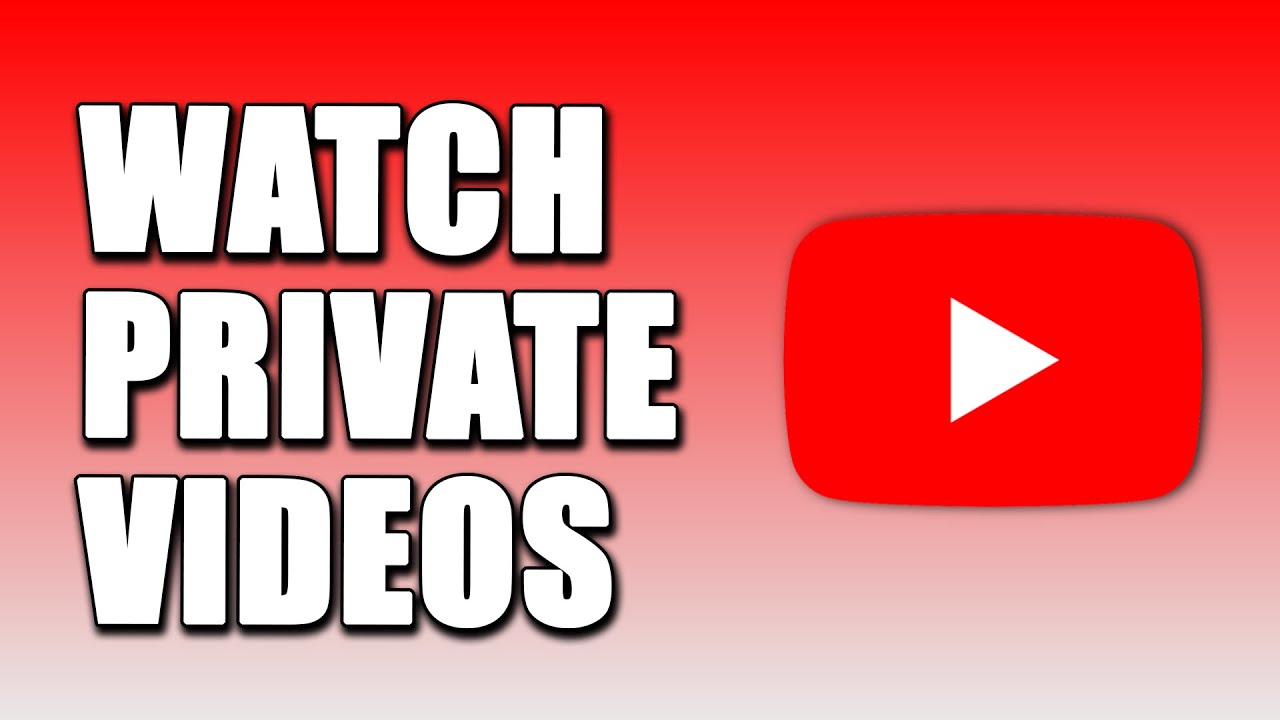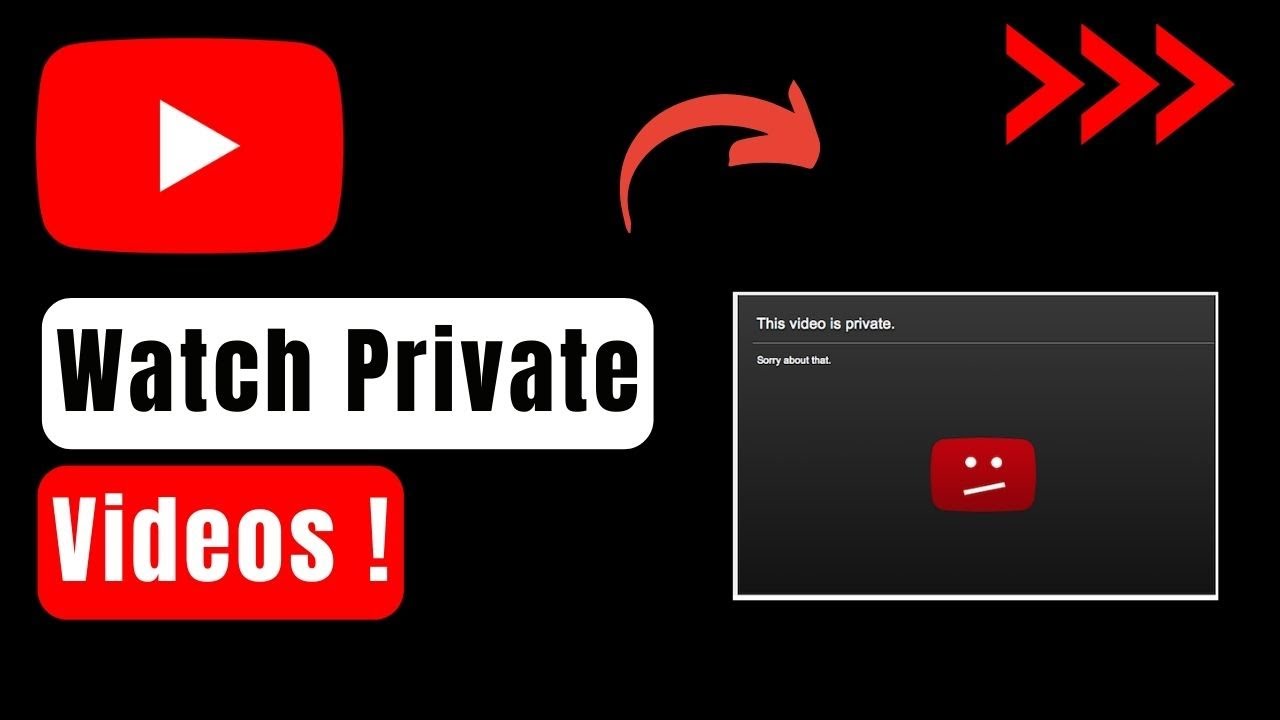Have you ever stumbled upon a video that piqued your interest only to discover it’s marked as private? It can be frustrating, but don’t worry! In this blog post, we’ll unpack what private YouTube videos are and explore why creators decide to make their content private. So, grab your favorite drink and let’s dive in!
Understanding Private YouTube Videos

Private YouTube videos are unique because they’re not available to the general public. Instead of being accessible to everyone, these videos have specific restrictions:
- Visibility: Only the uploader can see the video, unless they share it with specific users.
- Access Control: The creator can invite certain users by adding their email addresses. Only these invited users can view the video.
- No Searchability: Private videos won’t show up in search results, playlists, or on the uploader's channel.
- No Embedding: People cannot embed these videos on other websites, which protects the privacy even further.
This feature is useful for creators who want to maintain control over their content without making it accessible to the entirety of YouTube. Perhaps they’re sharing sneak peeks with select fans, testing new material with trusted friends, or even working on collaborative projects that aren’t ready for the public eye.
But how can you tell if a video is private? If you come across a private video, you’ll see a lock icon instead of the standard play button. Attempting to access the video without being invited will lead you to a message stating that the video is private.
In short, private videos are a great way for creators to curate their audience and share their work selectively. While it may be a bit of a letdown if you can't watch one, understanding this feature gives you greater insight into the dynamics of content sharing on YouTube.
Also Read This: Can't Access YouTube and How to Troubleshoot Common Issues
Why Creators Make Videos Private

You might wonder why someone would restrict their content in the first place. There are several valid reasons why creators choose to make their videos private:
- Testing and Feedback: Many creators use private videos to test new ideas or gather feedback from a select group before a broader release.
- Collaborative Projects: If creators are working with others, they may want to share content without releasing it publicly until it’s finalized.
- Sharing Personal Moments: Creators often use private settings to share personal videos with friends and family without broadcasting it to the world.
- Exclusive Content: Many YouTubers provide behind-the-scenes content to their loyal followers through private videos as an added perk.
- Preventing Unauthorized Use: In some cases, creators may want to keep their content private to avoid copyright issues or unauthorized use of their videos.
Each of these reasons highlights the importance of creative control. Many creators have specific intentions behind their content, and sometimes it’s about maintaining quality or integrity rather than just gaining views.
In an age where oversharing is commonplace, private videos allow a necessary pause. They offer a safe space for creators to explore their work, interact with their audience, and maintain control over their artistic expression.
So the next time you encounter a private YouTube video, remember that there are meaningful reasons behind that choice. It’s all part of the fascinating world of content creation!
Also Read This: How to See Who Liked Your Video on YouTube: A Step-by-Step Guide
3. Steps to Request Access to Private Videos
If you’ve stumbled upon a private YouTube video and are eager to watch it, don’t worry—requesting access is straightforward! Here’s a simple step-by-step guide to help you navigate the process:
- Identify the Owner: The first thing you need to do is find out who uploaded the video. This information is typically available on the video page, often displayed beneath the video title. If the uploader is a friend or someone you know, it’s time to reach out!
- Contact the Uploader: Once you’ve located the content creator, the next step is to ask for permission. You can send them a message through their social media accounts, email, or even through YouTube’s messaging feature if they have it enabled. Be polite and respectful—after all, it’s their content!
- Make Your Request Clear: When you reach out, explain why you want to watch their video. Whether it’s for research, inspiration, or simple curiosity, letting them know your intentions can make them more inclined to share access with you. You might say something like, “I saw your private video on [insert topic], and I believe it would really help me with my project. Would you be willing to grant me access?”
- Be Patient: After sending your request, give the uploader some time to respond. Everyone has different schedules, and they may need a little while to get back to you. If you don’t hear back after a week or so, it’s okay to send a gentle follow-up message.
- Check Your Email: If the uploader agrees to let you view the video, they should send you an email with access instructions. Make sure to check your inbox (and spam folder) for any correspondence. Keep an eye out for a YouTube notification as well, as that may pop up if you’ve been granted access!
Remember, it's essential to respect the content owner's wishes—if they choose not to share their video, it’s best to accept that and move on. Privacy is important, after all!
Also Read This: How to Reply to a Comment on YouTube: Engaging with Your Viewers
4. Alternatives to Viewing Private Videos
Not every private video is accessible, and sometimes, despite your best efforts, you may not be able to view them. However, don’t despair! There are alternative avenues you can explore to find similar content or gather the information you need:
- YouTube Channels: Often, content creators have other videos on their channels that are public. Browse through their channel to find videos that might cover similar topics or provide valuable insights.
- Social Media: Check the uploader’s social media platforms. Many creators share snippets, behind-the-scenes content, or discussions about their videos on platforms like Instagram, Twitter, or TikTok. You might find what you’re looking for there!
- Forums and Discussion Groups: Websites like Reddit and Quora can be excellent resources. You can ask questions related to the private video’s topic. Sometimes, other users might summarize the content or share their insights based on what they’ve seen.
- YouTube Alternatives: Explore other video-sharing platforms. Websites like Vimeo, Dailymotion, or even educational platforms like Skillshare might have similar content. You’ll be surprised at how much valuable information is out there!
- Google Search: Don’t underestimate the power of a simple Google search. Often, the information presented in private videos may also appear in blog posts, articles, or even public forums. You might find just what you need without any hassle!
Remember, while private videos can be enticing, there is a wealth of content available that is not restricted. Use these alternatives to keep your learning and exploration going!
Also Read This: What Happened to The CW on YouTube TV? Reasons and Alternatives
5. Tips for Discovering Similar Content
Have you found a private YouTube video that really resonates with you? Maybe it was a tutorial, a music piece, or some incredible content that sparked your interest. While private videos can be a bit of a dead end, there are ways to discover similar content that you can enjoy just as much. Here are some easy tips to get started:
- Use Related Videos: When watching videos on YouTube, don’t forget to check the "Related Videos" section. It’s located on the right side of the video you're watching. Often, it suggests content based on your current viewing, so you might stumble upon something amazing.
- Explore Channels: If the private video belongs to a channel you can access, visit the channel page and browse through their library. Channels often upload similar content, so you’re likely to find something that piques your interest.
- Engage with Communities: Platforms such as Reddit, Discord, or specific Facebook groups are treasure troves for discovering new content. Join communities that are focused on topics you love, and share recommendations. Others might even point you toward private video alternatives.
- Utilize YouTube Playlists: Some users create playlists on certain themes or topics. If you find a playlist related to your interests, dive in! You might uncover gems that have been set to public.
- Search Keywords: A good old-fashioned search can yield fantastic results. Try variations of the title of the private video, or use keywords that capture the essence of what you enjoyed. YouTube’s algorithm is designed to provide relevant suggestions.
Remember, discovering similar content is all about connecting the dots between your interests and what’s available. Happy hunting!
6. Respecting Privacy and Copyright on YouTube
When navigating the world of YouTube, especially with private videos, it’s crucial to keep respect for privacy and copyright at the forefront of your mind. Here are a few key points to consider:
- Understanding Privacy Settings: YouTube allows users to set their videos to private for a reason. They may want to limit access to a select audience or share content with friends or family only. When you encounter a private video, respect the creator's choice and do not try to circumvent this setting.
- Copyright Laws Matter: Protecting original content is vital for content creators. If you enjoy certain videos, refrain from using parts of them in your own content unless you have explicit permission, or you’re operating under fair use, which has specific limitations.
- Ask Before Sharing: If you happen to know the creator of a private video and would like to share it or discuss it, it’s always a good idea to ask for their permission first. It shows respect and helps build a positive relationship.
- Support Original Content: If you love a creator’s work, consider supporting them through their public videos. Subscribe, like, and share their content. This encourages them to produce more and creates a thriving community.
- Report Violations: If you stumble upon videos that infringe copyright or violate privacy laws, it’s best to report them to YouTube. This helps maintain the integrity of the platform for everyone.
At the end of the day, YouTube is a community built on creativity. By respecting privacy and copyright, we contribute to a healthier environment for content creators and viewers alike. Let's keep it respectful and enjoy the wonderful world of videos available!
 admin
admin








